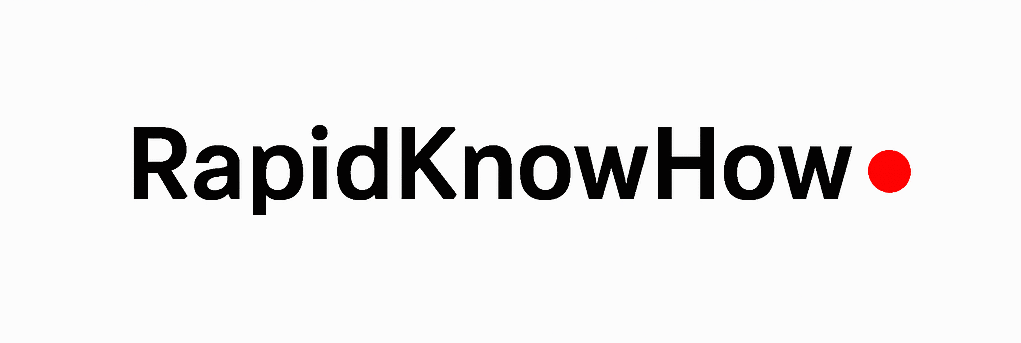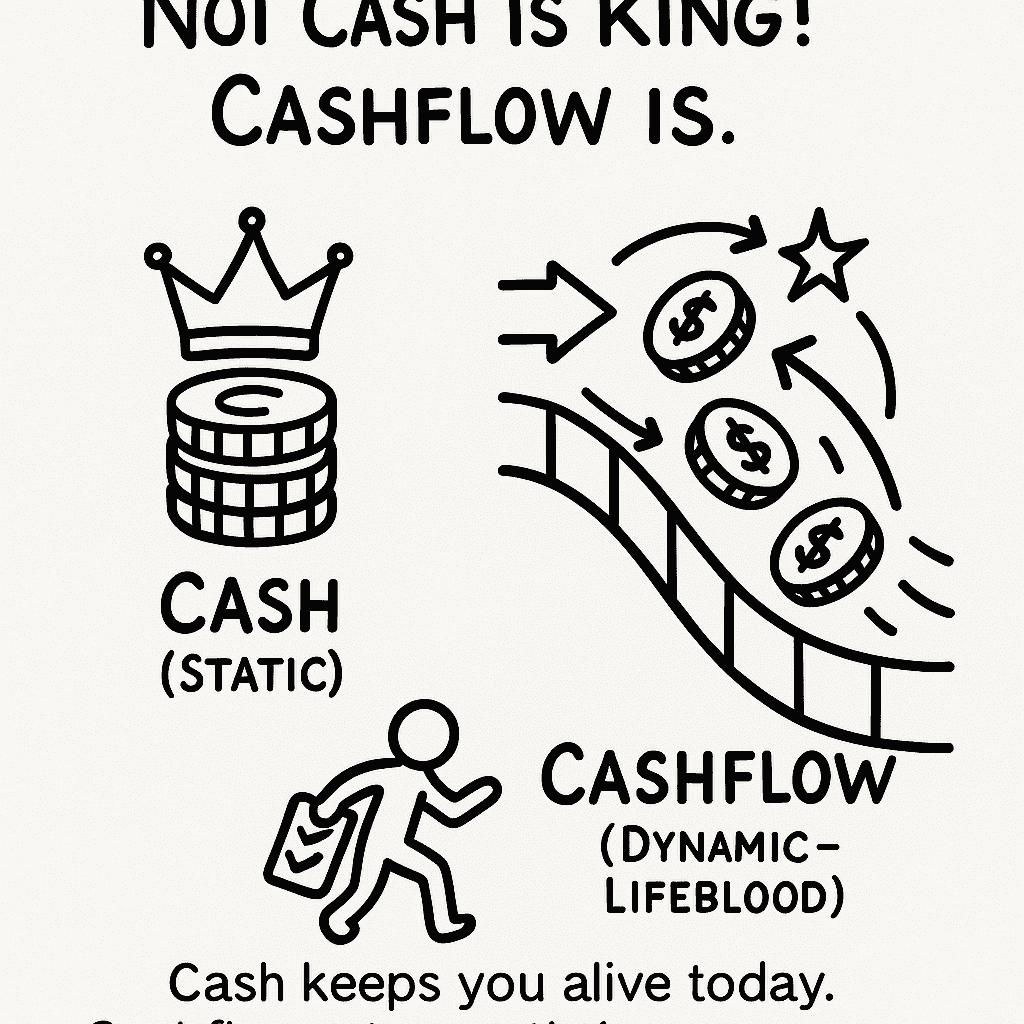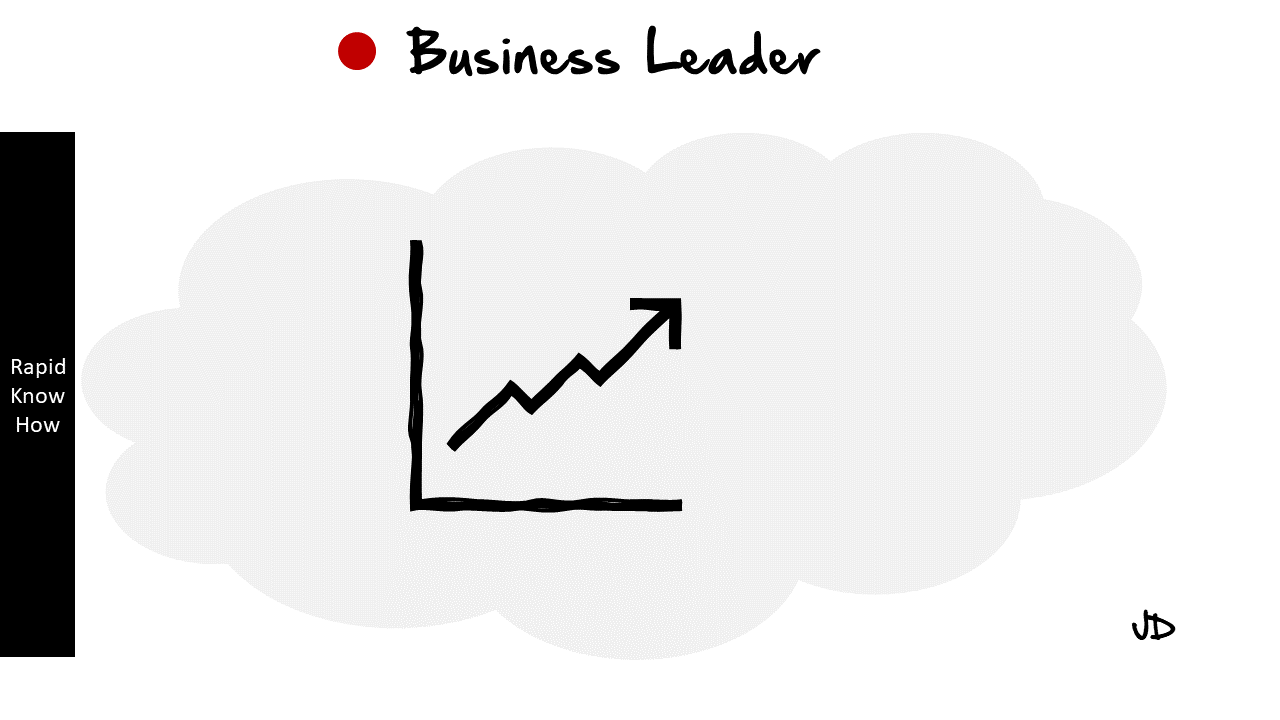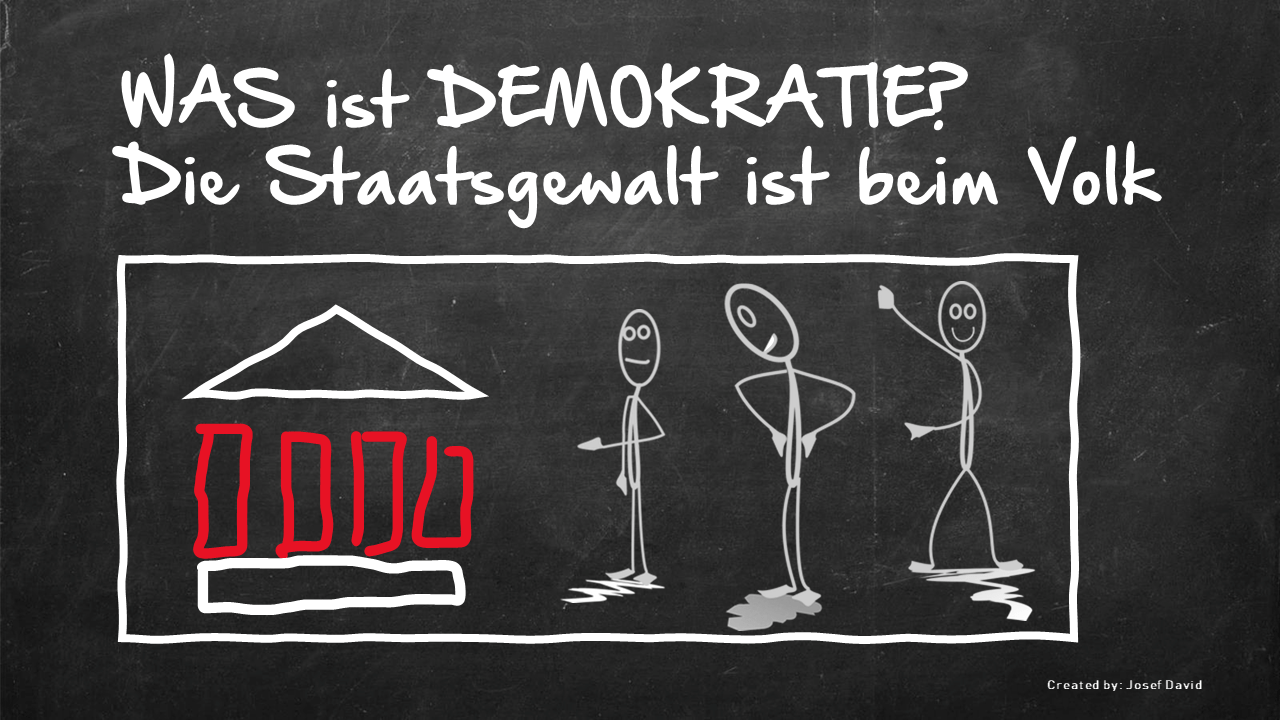1. Situation Overview
Many high-net-worth individuals and entrepreneurs fall into the trap of being asset rich but cash poor — owning substantial assets (real estate, businesses, art, etc.) but having limited liquidity for daily needs, opportunities, or crises.
It creates a paradox of wealth without freedom.
2. Core Problem
| Dimension | Description | Effect |
|---|---|---|
| Illiquidity | Assets like real estate, private businesses, or collectibles are hard to sell quickly. | Cash bottleneck during crises or opportunities. |
| Over-Leverage | Using debt to expand asset portfolios. | High interest burden; low cash flow buffer. |
| Lifestyle Inflation | High fixed costs (property, taxes, staff). | Erodes available liquid capital. |
| Lack of Cash Flow Assets | Portfolio dominated by appreciation assets. | No regular income stream. |
| Tax & Inheritance Lock-In | Unrealized capital gains discourage selling assets. | Wealth trapped in non-performing form. |
3. Strategic Diagnosis
Being “asset rich, cash poor” reflects poor liquidity management and emotional attachment to tangible assets rather than focusing on financial agility.
The root cause often lies in a lack of clear ROICE logic — no consistent balancing of Return on Innovation, Convenience, and Efficiency across the asset portfolio.
4. Strategic Formula to Avoid the Trap
The RapidKnowHow CASH Formula
C.A.S.H. = Convert – Automate – Streamline – Hedge
| Step | Action | Purpose |
|---|---|---|
| C – Convert Illiquid Assets | Gradually sell or tokenize a portion of real estate, art, or equity holdings. | Build liquidity reserve (12–24 months of living/operating costs). |
| A – Automate Income Streams | Build or invest in recurring revenue models (licensing, royalties, BaaS, REITs). | Create stable monthly inflow. |
| S – Streamline Expenses & Debt | Reduce lifestyle costs and refinance expensive loans. | Free up cash flow margin. |
| H – Hedge Future Risks | Diversify into liquid, inflation-protected, and digital assets. | Preserve purchasing power. |
5. Wealth Composition Model
| Asset Type | Ideal Allocation (Target 2030) | Liquidity Impact |
|---|---|---|
| Cash & Equivalents | 15–20% | Immediate |
| Liquid Investments (ETFs, Bonds) | 20–25% | 2–5 days |
| Productive Assets (Businesses, IP, BaaS Licenses) | 30–35% | 3–6 months |
| Real Estate / Fixed Assets | 20–25% | 6–18 months |
| Alternative/Art/Collectibles | 5–10% | Illiquid |
✅ Goal: At least 40–50% of total net worth should be convertible to cash within 3 months.
6. Emotional and Strategic Pitfalls
- Status Attachment: Viewing real estate and possessions as success symbols.
- Opportunity Blindness: Missing new business chances due to liquidity lock.
- Legacy Paradox: Inheriting fixed assets but no operating cash to sustain them.
- Crisis Vulnerability: Inflation or credit crunch forces selling assets at discounts.
7. Transformational Strategy: From Assets to Liquidity Flow
RapidKnowHow Wealth Flow Triangle
1. Assets → 2. Cash Flow → 3. Compounded Growth
How to Transition:
- Convert underperforming properties into rental yield or fractional shares.
- License IP and turn know-how into recurring revenue.
- Channel profits into cash-flow compounding systems (e.g., BaaS, royalties, dividend ETFs).
- Reinforce with AI-Driven dashboards to track real-time ROICE balance.
8. Real-Life Example
Case:
Entrepreneur owns €5 M real estate + €500 K art + €200 K business share = €5.7 M total assets but only €20 K cash.
Risk:
Liquidity crisis during downturn or medical emergency.
Solution (Applied CASH Formula):
- Sell 10% property share (€500 K) → liquidity buffer.
- License existing business process → €4 K/month royalty.
- Invest €300 K in dividend ETF (4%) → €12 K/year income.
- Result: Sustainable €60 K annual free cash flow, freedom restored.
9. Strategic Dashboard: ROICE Wealth Stability Index
| Indicator | Definition | Healthy Threshold |
|---|---|---|
| Liquidity Ratio | Liquid Assets / Total Net Worth | ≥ 0.40 |
| Debt-to-Income | Debt Service / Cash Flow | ≤ 0.30 |
| ROICE Flow Score | (Innovation + Convenience + Efficiency Return) / 3 | ≥ 7.0 |
| Freedom Index | (Cash Flow – Fixed Costs) / Cash Flow | ≥ 0.25 |
10. Conclusion: Wealth is Freedom, Not Storage
Being asset rich but cash poor means you own wealth but lack freedom.
To avoid it:
- Continuously rebalance toward liquidity.
- Build cash-flowing ecosystems, not just asset collections.
- Apply the CASH Formula every 6 months.
- Think like a Wealth Operator, not just an Owner.
“Wealth isn’t what you own. It’s what you can use to act, decide, and sustain — anytime.”– Josef David
10 Most Effective AI Strategies to Build Cash-Flowing Ecosystems 2025 – 2030
RapidKnowHow + ChatGPT | Thriving from Ownership to Flow
1. AI-Driven Licensing Systems
Concept: Convert your intellectual property (know-how, tools, methods) into licenseable digital assets.
Mechanism: AI automates onboarding, support, and billing.
Result: Recurring monthly license income with near-zero marginal cost.
Example: RapidKnowHow PowerBooks & Simulations licensed to universities or consultants worldwide.
KPI: License renewal rate > 85 %.
2. Predictive Demand Intelligence
Concept: Use AI models to forecast customer behavior and adjust offerings in real time.
Mechanism: Combine past transaction data + trend analytics.
Result: Optimize pricing, reduce inventory, and stabilize cash inflows.
Example: AI dashboards predicting B2B subscription churn 60 days ahead.
KPI: Revenue volatility < 10 %.
3. Subscription-as-a-Service (SaaS / BaaS)
Concept: Turn one-time services into ongoing subscriptions.
Mechanism: AI automates client communication, billing, and usage analytics.
Result: Continuous cash flow replacing project-based peaks.
Example: “Strategy-as-a-Service” for SMEs with monthly insight updates.
KPI: Monthly Recurring Revenue (MRR) growth > 5 % / month.
4. Autonomous Marketing Engines
Concept: Deploy AI agents that write, test, and optimize marketing copy and visuals 24/7.
Mechanism: Natural-language models + real-time A/B testing.
Result: Lower customer-acquisition costs (CAC) and constant inbound lead flow.
Example: ChatGPT-powered landing pages adapting headlines by visitor profile.
KPI: CAC ↓ 30 % ; Conversion ↑ 40 %.
5. AI-Optimized Pricing Systems
Concept: Dynamic pricing adjusts automatically to demand and competitor changes.
Mechanism: Machine-learning models trained on market and cost data.
Result: Maximum margin per sale while staying competitive.
Example: Smart pricing for online courses and digital assets.
KPI: Gross Margin > 50 %.
6. Data-to-Revenue Platforms
Concept: Monetize operational or user data via anonymized analytics products.
Mechanism: AI cleans, clusters, and visualizes data insights for paying clients.
Result: Additional recurring revenue stream from existing operations.
Example: GeoPower® Data Dashboard licensing to think tanks.
KPI: Data Revenue > 10 % of total turnover.
7. AI-Enhanced Customer Retention
Concept: Predict churn, personalize offers, and trigger loyalty actions automatically.
Mechanism: Sentiment analysis + predictive scoring.
Result: Higher lifetime value (LTV) and smoother cash flow.
Example: Personalized renewal reminders for licensees.
KPI: Retention > 90 %.
8. Automated Affiliate Ecosystems
Concept: Empower partners and influencers with AI-tracked referral programs.
Mechanism: Smart contracts + performance analytics.
Result: Exponential sales network with minimal management effort.
Example: RapidKnowHow Affiliate Dashboard rewarding top-performing educators.
KPI: Partner-generated sales > 40 %.
9. AI-Based Cost Efficiency & Workflow Automation
Concept: Replace repetitive operations (admin, reporting, content) with AI bots.
Mechanism: Robotic Process Automation (RPA) + Generative AI.
Result: Reduced fixed costs → higher free cash flow.
Example: Automated PDF / Word / WooCommerce creation pipelines.
KPI: Operating Margin ↑ 20 %.
10. Intelligent Cash-Flow Orchestration
Concept: Use AI to monitor liquidity, forecast gaps, and allocate surplus to yield accounts.
Mechanism: Real-time treasury dashboards with predictive alerts.
Result: No liquidity surprises; cash always in motion.
Example: ROICE Dashboard integrating bank APIs and AI trend lines.
KPI: Liquidity Coverage > 150 %.
Strategic Framework Summary (2025 – 2030)
AI Strategy Primary Goal Cash-Flow Impact ROICE Driver Licensing Systems Recurring revenue High Innovation Demand Intelligence Stable sales Medium Efficiency Subscription Models Predictable income High Convenience Autonomous Marketing Low CAC High Efficiency Dynamic Pricing Margin growth High Innovation Data Monetization New income stream Medium Innovation Customer Retention Reduce churn High Convenience Affiliate Ecosystem Expand reach High Innovation Workflow Automation Cut costs Medium Efficiency Cash-Flow AI Control Liquidity stability High Efficiency
2025 – 2030 Outlook
Leaders who connect these 10 AI levers into one ROICE ecosystem will:
- Cut volatility by > 40 %.
- Increase cash yield by > 50 %.
- Build wealth that flows, not stagnates in assets.
“AI turns static wealth into dynamic flow — and dynamic flow into lasting freedom.” – Josef David
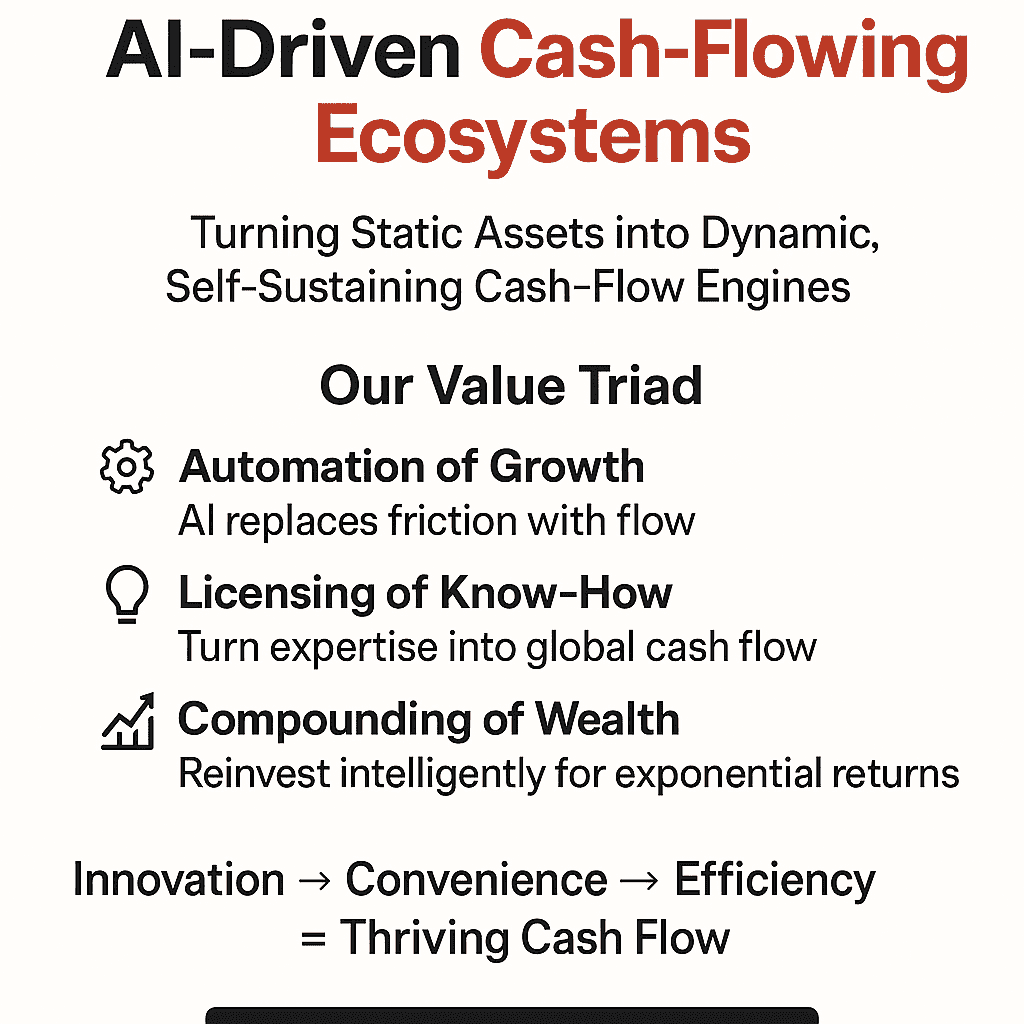
The Leading Builder of AI-Driven Cash-Flowing Ecosystems
Turning Static Assets into Dynamic, Self-Sustaining Cash-Flow Engines.
RapidKnowHow + ChatGPT pioneers the transformation of businesses into AI-Driven Business-as-a-Service Ecosystems that generate predictable, recurring, and scalable cash flow.
Our mission: empower leaders, investors, and entrepreneurs to convert knowledge, innovation, and networks into compounded wealth systems — sustainably and transparently.
“We don’t just teach AI strategy — we build your ecosystem that earns while you sleep.”
- ⚙️ Automation of Growth – AI replaces friction with flow
- 💡 Licensing of Know-How – Turn expertise into global cash flow
- 📈 Compounding of Wealth – Reinvest intelligently for exponential returns
The ROICE Formula:
Innovation (Create) → Convenience (Deliver) → Efficiency (Sustain) = Thriving Cash Flow
